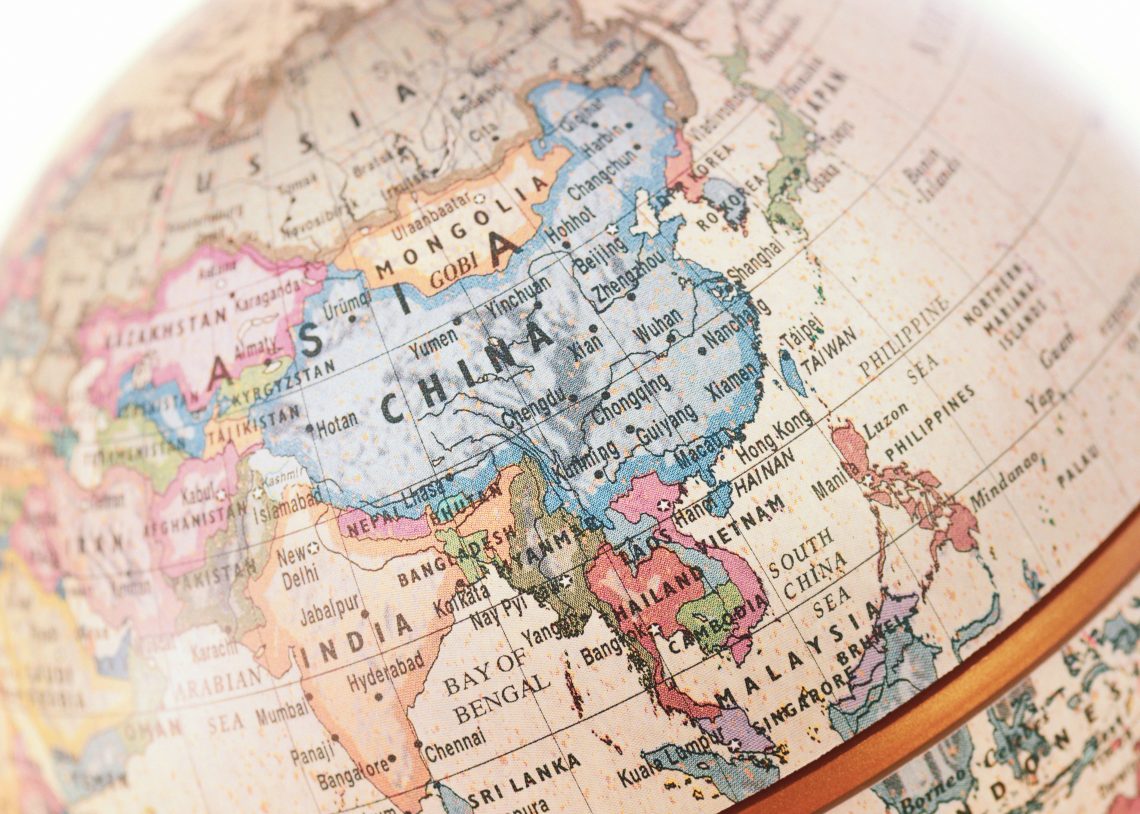Market Update: APAC Offshore Wind At A Glance

Offshore wind in the Asia-Pacific (APAC) region presents an exciting opportunity for developers. As both mature and emerging markets are catching-up with the trend, it can be expected that more large-scale offshore wind projects will prevail in the future. However, no matter the extent of the maturity of the markets, and no matter what pathways and mechanisms the countries have adopted, each country has its challenges. In this article, we examine some key APAC countries and briefly provide our perspective and outlook.
Taiwan
Taiwan has just confirmed the Round 3 – Phase 1 offshore wind auction result that featured Corio, CIP, Northland Power, Synera Renewables (SRE), EDF & Taiya, Skyborn and Lealea Group all winning the allocation for 3GW in total. However, the withdrawal of Orsted and JERA from the auction shocked the market and the Taiwan government, and there are also several unresolved issues awaiting the negotiation between the auction winners and the authorities, such as penalty mechanisms regulated under Administration Contract. Taiwan’s offshore wind market is facing new waves of challenges as the Round 2 and Round 3 issues come together. Round 2 project construction delays bring worries to the financial institutions for Round 3 project financing, and the general offshore wind policy is criticised by the opposition parties as more and more issues are emerging. Most of the developers still diligently prepare for the 2023 auction, which is expected to be more competitive than 2022 and keep lobbying the authorities to amend the auction rules to reduce project development risk.
China
According to RCG’s GRIP database, China has retained its leading position as the world’s largest offshore wind market by far with 34.8 GW of installed capacity by the end of 2022. After the rapid growth of 16 GW of installation in 2021 due to the expiry of the national FiT, commissioning in China has continued at a moderate rate in 2022 with an increase of about 8.3 GW. For the upcoming year, Chinese offshore wind markets are expected to increase for several reasons: (1) additional regional subsidies provided by some provinces/ cities; (2) Hebei reactivating its offshore wind policies; (3) Guangxi and Hainan kicking-off its offshore wind development; (4) Beijing’s exit from zero-COVID. Moreover, floating wind in deeper waters and large wind turbines of 15+ MW are expected to be China’s next step.
Japan
Offshore wind in Japan has also made progress. The sites won by the Mitsubishi Corporation-led consortium under the Round 1 auction have certified occupancy plans. A year after the Round 1 offshore wind auction was originally announced – – Japan launched the Round 2 auction at the end of 2022 with the declaration of 4 sites across Akita Prefecture, Niigata Prefecture, and Nagasaki Prefecture, with an expected 1.8 GW in total capacity.
To encourage accelerated development timelines to meet the government’s 2030 offshore wind targets, the Japanese government has reshaped the rules by revising the auction framework for Round 2 following the suspension of the Happo-Noshiro auction as well as criticism from developers regarding the extremely low Round 1 bidding cost. Changes include scoring based on COD, transition from the Feed-in Tariff (FiT) to the Feed-in-Premium (FIP) mechanism, and a capacity cap of 1 GW for a single developer. These amendments aim to secure diversity in the Japanese offshore wind market, and are expected to enable a broader selection of developers to enter into a more open Japanese market.
South Korea
With the government’s willingness to develop renewables, South Korea has announced its ambition to establish 12GW offshore wind by 2030. Particularly, the presence of some key local supply chain players with global competitiveness (e.g., CS Wind, Samkang M&T, LS Cable) yield favourable opportunities for developers. It’s worth noting that several developers, such as Corio, Equinor, CIP, Shell, CoenHexicon, and KF Wind, propose floating wind projects in Ulsan and have obtained the electric business licence, which is the first key to obtaining further permits. Currently, the Ministry of Trade, Industry and Energy (MOTIE) expects to continue the enactment of the “Special Act on Wind Power” for the introduction of offshore wind planning sites and the establishment of a one-stop support system.
However, South Korea still lacks progress regarding offshore wind. Currently, only 4 (548 MW) of the 70 (20.8 GW) offshore wind projects have received both electricity business licences and the final permits necessary for development as the full permitting process for each stage of offshore wind development is complicated. A decentralised permitting process involving multiple authorities has already caused confusion and inconsistencies, and thus lacks transparency and predictability. There are also unclear marine jurisdictional boundaries between local authorities as well as between local and central government. As that most of the licenced offshore wind farms are overlapping with government-designated fishing activities area, which leads to conflict and thus increases the obstacles for further development, the Yoon government plans to develop offshore wind to be government-led in the future.
Australia & New Zealand
Australia’s Offshore Electricity Infrastructure (OEI) Act 2021 came into effect on 2nd June 2022, providing the regulatory framework for introducing offshore wind generation to Australia’s renewable sector. Along with this, the Minister for Climate Change and Energy (the Minister) declared 6 priority regions for assessment for their suitability for offshore wind energy. This, not surprisingly, has triggered great interest and activity in the Australian offshore wind sector as domestic and international developers release and position proposed projects as greater clarity in Australia’s energy transition has been released.
Gippsland, Victoria was the first region to be declared suitable by the Minister (on 19th December 2022). Feasibility License applications are now invited from developers in this region and will be accepted between 23rd January and 27th April 2023. A Public Consultation period is expected to be announced in February for the Hunter Region in New South Wales.
New Zealand is in the early stages of its offshore wind journey. In order to provide a regulatory framework for offshore renewables by 2024 and to achieve a net-zero energy system by 2050, the government has released proposals for the advancement of offshore renewable energy for public consultation. Public comments can be submitted until 14th April 2023 which will help guide policy decisions and enable early feasibility activity.
Vietnam
The offshore wind market in Vietnam is still at an early stage, and the Vietnamese Government has set ambitious goals for offshore wind. Based on the draft National Power Development Plan VIII (PDP 8), dated December 2022, offshore wind has been targeted to reach 7 GW by 2030 and 87 GW by 2050. As of 2022, statistics from the Institute of Energy (IE) under MOIT revealed 22 projects with a total capacity of 51,659 MW proposed to be added to the national plan in the northern area, and 74 projects with a total capacity of 104,627 MW were proposed in the central and southern areas. Foreign corporations, such as Sumitomo and Orsted are making major moves into offshore wind power in Vietnam – Sumitomo announced the development of an offshore wind projects; Orsted and Vietnam’s T&T Group launched a strategic collaboration to develop offshore wind in Vietnam. Mainstream Renewable Power, CIP, and Equinor are also showing their strong interest.
However, there are still issues to be resolved. The approval of permits for conducting offshore surveys has been halted temporarily at the moment due to legal and technical issues waiting to be resolved. There are still unclear rules in permitting and a lack of progress towards an auction mechanism. Moreover, in January 2023, the Ministry of Industry and Trade (MOIT) announced that the ceiling price for offshore wind projects operational after November 2021 is 1,816 VND/kWh (0.072 EUR/kWh), which is 21.8% lower than the previous FiT rate. These issues are posing uncertainties for developers and make it challenging to mobilise resources from the international capital market.
The Philippines
According to GRIP database, the Philippines has nearly 31 GW of offshore wind projects currently in the pipeline. The Department of Energy has issued approximately 40 Wind Energy Service Contracts (WESC), the country’s equivalent to leasing licences. Some foreign developers are already present in the country such as WPD, Iberdrola, Copenhagen Energy, and Shell. Local developers are doubling down on expansion to the offshore wind space, led by AC Energy PetroGreen Energy, and Alternergy Group. Britain, Norway, Denmark, China, and the United States are also increasing their engagements with their Philippine counterparts to offer their expertise and technology in offshore wind. Due the huge interests that foreign governments and developers are signifying in the country’s budding offshore wind market, The Philippines has already lifted its foreign ownership restrictions in renewable energy. Foreigners can now own up to 100% equity in renewable energy projects. The government is also in the process of finalising a regulatory framework specific to offshore wind, which is expected to be released within the first half of this year.
Our member, RCG is a specialised expert services firm dedicated to the global renewable energy sector. We are a firm of practical consultants known for our independent advice, technical expertise, industry foresight, and sleeves-rolled-up approach to projects.
From strategy to implementation, we serve businesses, governments, and non-profit organisations around the world with management consultancy, technical advisory, and economics services for both mainstream and emerging energy technologies. We work with the public sector, private equity and financial services firms, utilities and project developers, equipment manufacturers, and engineering and construction companies for on- and off-shore wind, solar, hydrokinetic and ocean energy, biomass, and energy-storage projects.
RCG has principal offices in London, New York, Vancouver, Glasgow, Barcelona, Taipei, and Tokyo. The Taipei office was opened in 2018 and the team is based in Taiwan’s prestigious Taipei 101 landmark.
